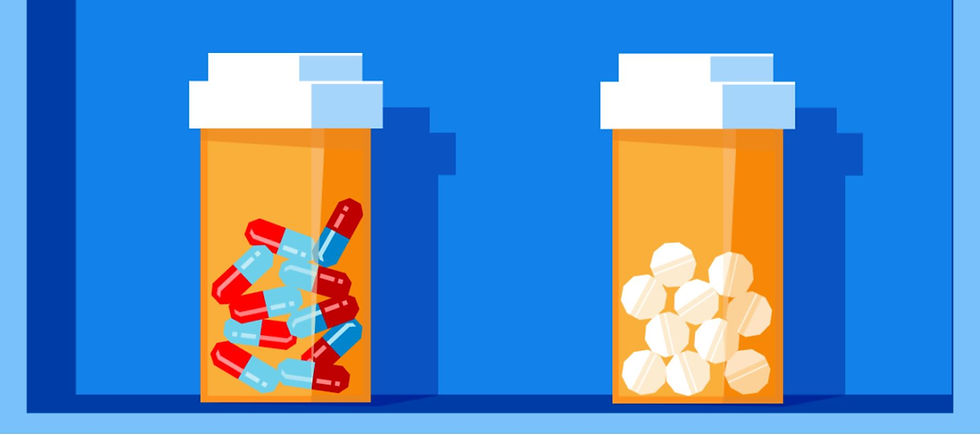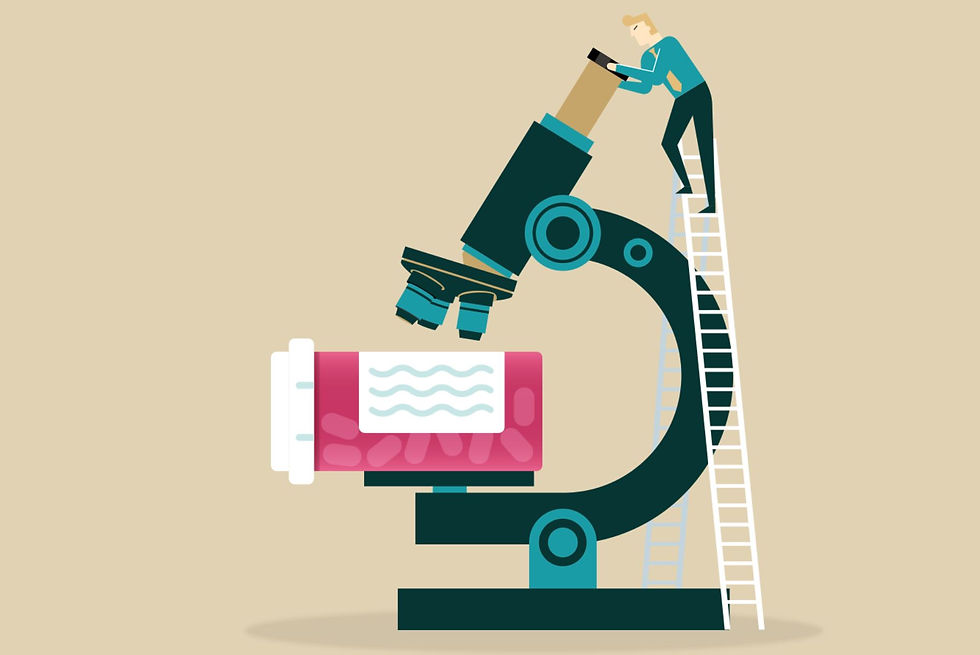The History of Generic Drugs in the United States
- Frances Hoggard
- Sep 2, 2022
- 4 min read
Updated: Mar 20, 2023
Believe it or not, substituting a brand-name drug with a generic drug hasn't always been a choice consumers could make!
‘Generic or brand name?’ It’s a common question you’ll get asked when you’re filling a prescription at your local pharmacy. If you’re interested in saving a few dollars, then taking the generic option is always a good choice, and you may be surprised to learn that you’re not alone.
In 2017, according to the Association for Accessible Medicines (AAM), nine out of every ten prescriptions were a generic drug. In fact, when both the brand name and generic options were available, consumers chose the generic option 97% of the time.
When available, consumers will choose the generic drug option over the brand name option 97% of the time.
We take it for granted now that there will be a cheaper version of a drug available when we fill our prescriptions, but that wasn’t always the case.
In 2020, Americans spent an estimated $348.4 billion on prescription drugs. So, it’s easy to see why choosing a generic option over a brand name has allowed consumers to save billions of dollars. However, it wasn’t always this way.

Timeline of Generic Drugs in the United States
According to the U.S Food & Drug Administration (FDA), “FDA-approved generic medicines work in the same way and provide the same clinical benefits and risks as their brand-name counterparts. A generic medicine is required to be the same as a brand-name medicine in dosage, safety, effectiveness, strength, stability, and quality, as well as in the way it is taken.”

In the 1920s, drug company Bayer fought against generic versions of its popular drug aspirin from being sold in markets around the world. They ultimately ended up losing their case and consumers worldwide suddenly had access to various aspirin choices.
However, until 1960, the generic drugs we were purchasing underwent far less rigorous testing. Instead, there was more of a ‘let’s see what happens’ approach to prescription medications. If it were found that a prescription medication had serious adverse side effects, then it would be recalled and taken off the shelves.
1962 New FDA authority: Safety and Effectiveness – Manufacturers were required to get FDA approval before releasing generic drugs. Any generic drugs already for sale between 1938-1962 were mandated to be retrospectively evaluated for safety and effectiveness under the Kefauver-Harris Amendments.
Regardless of whether a generic drug was an identical copy of the brand name drug, it still had to go through the same lengthy and expensive approval process. This drastically reduced the number of generic drugs entering the market. According to the Congressional Budget Office, only 35% of the top-selling brand-name drugs with expired patents had a generic alternative.
1974-1980: Substitutions – Forty-five states allow pharmacists to substitute generic for brand name drug prescriptions unless the prescriber has designated the prescription to be ‘dispense as written’ when writing the prescription.
1984 The Drug Price Competition and Patent Term Restoration Act (Hatch-Waxman Act) – The FDA is now allowed to approve an application for generic versions of brand name drugs released after 1962 through an ANDA, which means companies don’t need to repeat safety and efficacy research.

The Hatch-Waxman Act effectively opened the floodgates for generic versions of brand-name drugs and is directly responsible for the almost 100% competition rates between the two versions we see today.
Basically, it limited a patent on a drug to 20 years, and that’s 20 years from when the patent was filed, not when the drug hit the market for sale. So, most drug companies had approximately 7-12 years of exclusivity on their new drug before other companies could start trying to replicate it and sell it. There are a lot of legal ways companies could extend this patent time and also for generic companies to challenge these extensions.
Now, generic drug manufacturers could prove that their drugs using the same ingredients and processes within the body performed in the same way as their brand name counterparts by using the research, studies, and clinical trials of the brand name product rather than being forced to duplicate the same studies, research, and tests.
The Generic Drugs In the United States
The generic drug market in the United States has seen some immense swings up and down over the last century. From the floodgates being opened thanks to the Bayer Aspirin case, through to new FDA laws effectively shutting down the industry, and FDA law changes once again opening the floodgates to manufacturers with the Hatch-Waxman Act.
At the end of the day, it’s consumers like us that ultimately benefit because of increased savings through the competition when we choose to purchase a generic brand over a brand-name product.
However, without those brand-name companies spending years researching, testing, trialing, and millions of dollars developing the drugs, we wouldn’t have the drug available for generic companies to duplicate.
The Future of Pharmaceutical Patents

SPID®-Technology (Screen Printing Innovative Drug Delivery Technology) challenges traditional drug development processes through its digitization of pharmaceutical manufacturing and unlocks the potential for a new pharmaceutical landscape. Through SPID®-Technology, we can repurpose, reposition, and then relaunch generic APIs with patent protection while also addressing common generic drug issues such as patient compliance, dosage, and side effects.

Laxxon Medical is dedicated to engineering patented 3D pharmaceutical solutions which optimize products and benefit patients. Our goal is to establish SPID®-Technology as a manufacturing process that has the individual and the pharmaceutical partner in mind.
To keep up to date with SPID®-Technology and Laxxon Medical news and announcements, follow us on Twitter and LinkedIn.


